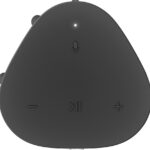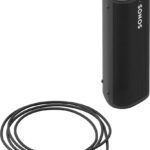
Sonos Roam in the test: Bluetooth Line-In for your Sonos system
Sonos introduces Sonos Roam as its first truly, portable Bluetooth speaker featuring voice control and integration into the Sonos Multi-room System.
With the Move, Sonos presented a smart speaker with a rechargeable battery and Bluetooth audio for the first time, followed by the new Sonos Roam, an extremely compact Bluetooth speaker.
Compared to the Sonos Move, the Sonos Roam is a flyweight, weighing just 0.95 lb (0.43 kg). Weighing in at a solid 6.61 pounds (3 kg), it was never intended to be an “always with you” Bluetooth speaker. Instead, the Move is an enhanced Sonos One that can be taken to outdoor activities thanks to its rechargeable battery. Compared to the current bestseller among Bluetooth speakers, the JBL Charge 5, weighing 2.12 lbs (960 grams). On the other hand, the Sonos Roam seems as light as a feather and can be taken anywhere.
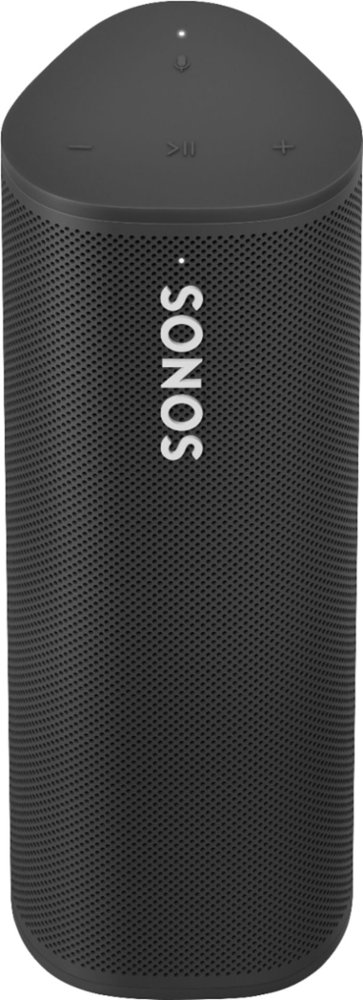
As a result, the new mobile companion from the Sonos is the smallest model in the Sonos speaker portfolio. Measuring 6.61 inches (16.8 cm) in length and with a diameter of 2.36 inches (6 cm), it is even more lightweight and compact than the small JBL Flip 5.
Unlike the JBL speakers, the Sonos Roam is not just a regular Bluetooth speaker, but a smart speaker with voice control and integration into the Sonos system. The Sonos Roam is equipped with far-field microphones and supports Amazon’s Alexa, Google Assistant as well as Google Assistant.
Sonos focused particularly on the interaction of WLAN and Bluetooth. This function is called “Sound Swap” – when you enter a Wi-Fi range and press and hold the Play button, the Roam searches for another Sonos speaker in the Sonos system and transfers the sound to this device.
Automatic Trueplay
The Sonos Roam has an “Automatic Trueplay” function. Sonos has trained it with thousands of manually recorded Trueplay settings to optimally adjust to the acoustics of an environment.
The Sonos Roam is equipped with sensors that detect when the speaker is moved or taken from indoors to outdoors. If it detects that the Roam is being moved, the true-play adjustment restarts. All this happens in the background and you do not realize anything. The Roam can also perform this adjustment via Bluetooth, unlike the Move. But this feature will be made available for the Sonos Move via a firmware update.
Bluetooth Line-In for the Sonos Multi-room System
There’s another interesting feature if you have an existing Sonos system which Sonos calls “Bluetooth Line-In”. Using Bluetooth Line-In, it is possible to play music on your entire Sonos network via Bluetooth. To do this, play music via Bluetooth on the Roam, in the Sonos app then select the Bluetooth Line-In option and the Roam functions as a Bluetooth receiver or distributor for the entire Sonos network. This is a really smart addition to the Sonos system.
The sound quality of the Sonos Roam
For those who will be hoping for a quality sound experience that is typical of Sonos following a high-quality build, then the Sonos Roam will not disappoint you. The Roam surprises with amazing sound quality, considering that it is by far the smallest speaker that Sonos has built so far. The sound from both the small tweeter and the midrange driver not only sounds clear and clean, but it also has a lot more power.
To get a closer look at the sound performance of the Sonos Roam, we listen to a few selected song samples. Starting with the song I Need to Know by Tom Petty, in which we once again noticed the great sensitivity with which the Roam reproduces low frequencies.

On Too Late To Turn Back by El Michels Affair, the Sonos Roam also shows its qualities when it gets a bit louder. With MGMT’s In the Afternoon, we were also surprised by the bass performance of the compact speaker. But here, we notice that the lower midrange and low-frequency range blur together a bit and become fuzzy. The remaining drums, synthesizers, and vocals, on the other hand, sound clean and detailed.
The Roam also suffers a bit from the limited fine resolution in the lower frequency range of Future’s bass-emphasized Life Is Good because of its size. Still, the song does not sound inaudible on the Roam. The small Roam still delivers a very acceptable sound performance here as well.
The Roam presents a wide and powerful sound overall, which you would not expect considering its size. Just the lower frequencies have problems keeping their resolution from time to time, yet they do not affect the overall sound.
The Sonos Roam as a Smart Speaker
As expected from Sonos, the Sonos Roam also comes with some smart features. When compared to the bigger speakers, the small Roam does not have to take a back seat. The Sonos app is the main place to set up and use the speaker. The app is available for Android and iOS.
This is where you can also connect your favorite streaming services to your speaker and access the huge streaming libraries of Spotify, Apple Music, and more. Using the Sonos app, the Roam will find a place in your Sonos networks like Sonos One or Sonos Move.

The AirPlay 2 option is particularly interesting for Apple users in Wi-Fi mode. In WLAN mode, voice control works with Amazon Alexa and Google Assistant.
However, the Sonos Roam cannot be used as a rear speaker in a Sonos home theater system. Only certain Sonos speakers, such as the Sonos One or Sonos Five, can be used for this purpose. But because of its small size, it is not the ideal setup for that anyway.
Design and features
The multi-room experts from Sonos have created an extremely small speaker with the Roam. Its triangular shape with rounded corners gives the Roam a clear form without being edgy. Sonos Roam is available in black and white.
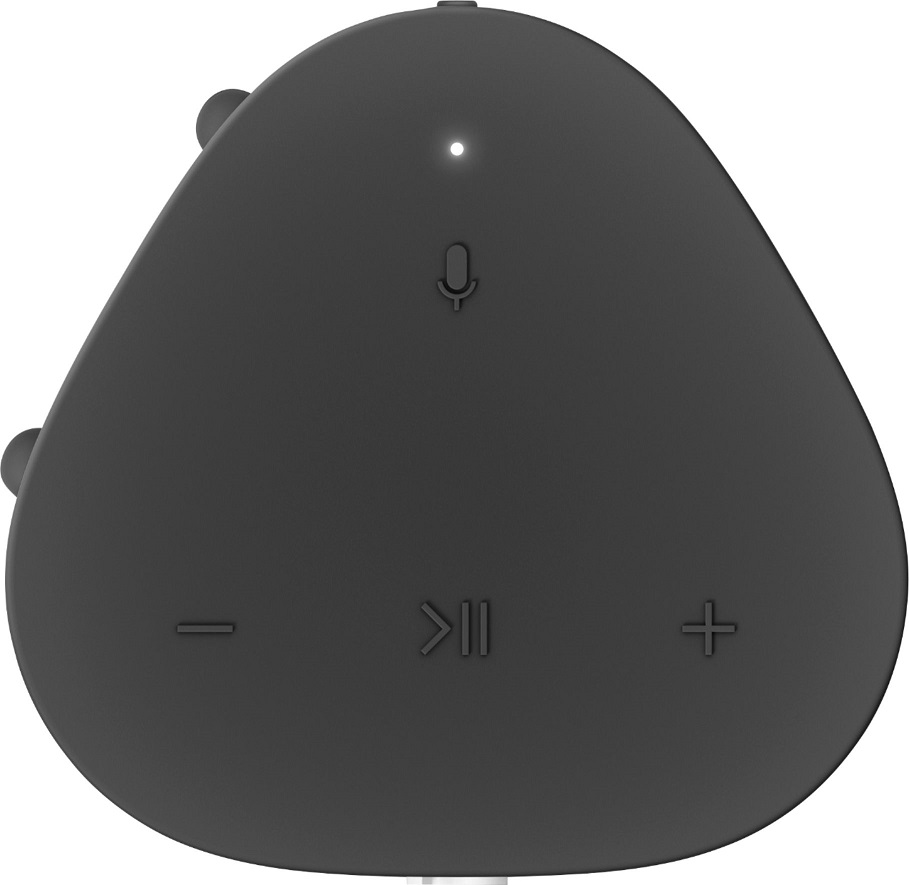
The Roam’s top and bottom are rubberized. This provides a stable stand when you place it on edge, and the buttons on the top are responsive and easy to use.
All the controls have the same basic commands that are common on Sonos speakers. Like play/pause, volume control, and a button to activate and deactivate the microphone.
Powerful travel companion
Functioning as a mobile smart and Bluetooth speaker, the Roam also brings outdoor capabilities with it. A stable connection over longer distances is no problem with its Bluetooth 5.0 interface.
It can be charged with the included USB-C charging cable, but a USB power adapter is not included. The battery has a capacity of 3600 mAh, which provides a battery runtime of up to 10 hours. That is impressive and enables several hours of mobile music enjoyment.
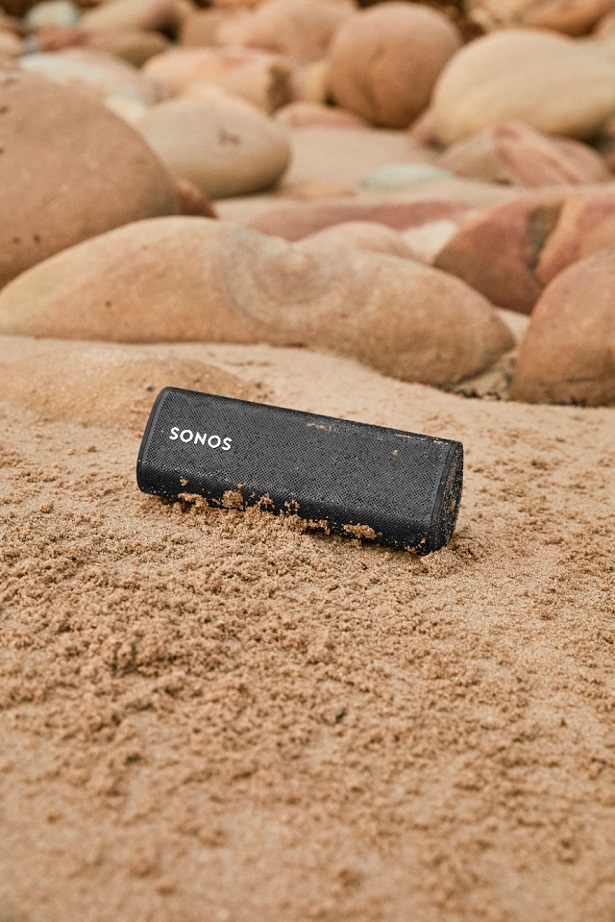
For on-the-go use, the Sonos Roam is protected excellently against moisture and dust in a rating of IP67.
The Sonos Move vs. the Sonos Roam: What are the differences?
When comparing the two Sonos speakers with rechargeable batteries with each other, there are two criteria: Portability vs. sound quality. The Sonos Move easily wins the sound rating simply because of the size difference. But it is not really portable compared to the Roam. The Sonos Move also plays in a different category in terms of price.
Conclusion
For Sonos fans, the Roam is definitely an exciting addition for on the go. Additionally, we have liked a feature that allows guests to easily stream music to the entire Sonos system via Bluetooth without having to log in to WiFi. The sound quality is also powerful and clean considering its size, even in the outdoors. The Automatic Trueplay is clever and works very well. But if you don’t have an existing Sonos system, the speaker loses a few of its key advantages.
We believe that Sonos meets all the requirements with the Sonos Roam. The Roam is a very compact Bluetooth speaker with Sonos-typical high-quality sound. It is also a smart speaker with voice control that integrates with the Sonos system and is accessible via Bluetooth for the first time. It’s a perfect enhancement, particularly for Sonos users.








